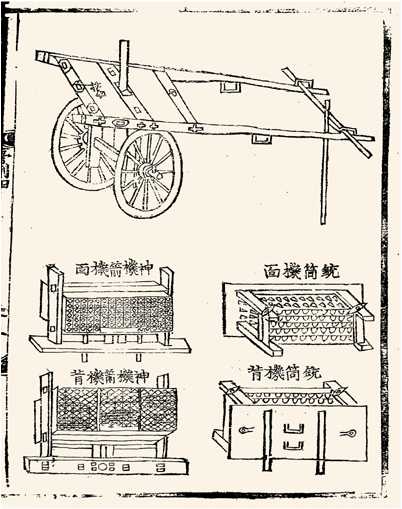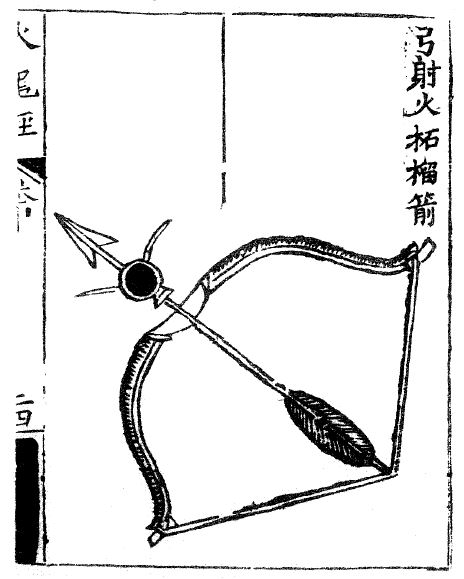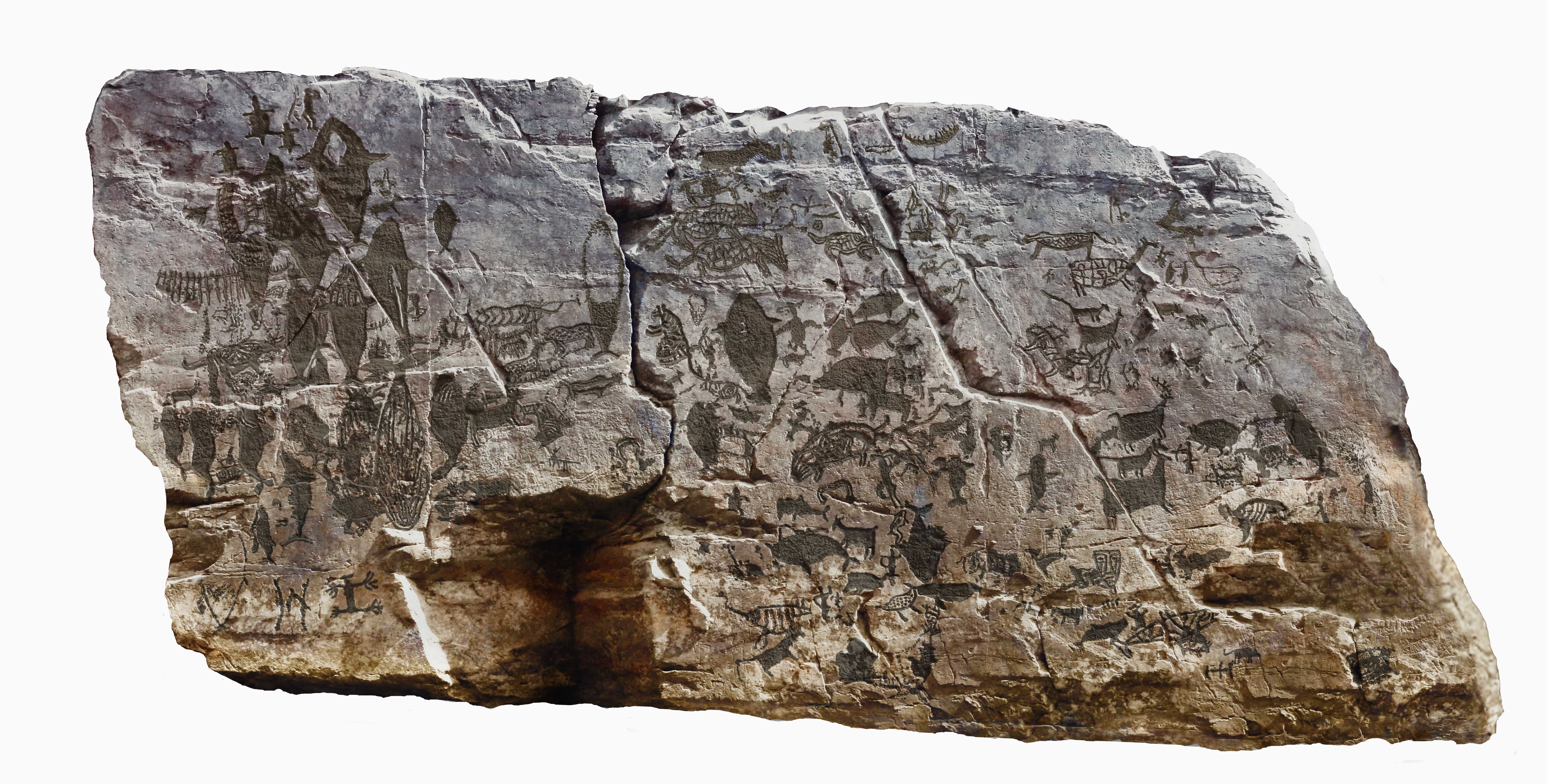|
Singijeon
''Singijeon'' or ''shinkichon'' ( ko, 신기전; Hanja: ; literally "Divine machine arrows") was a type of Korean fire arrow rocket, used during the era of the Joseon Dynasty (1392–1897). Multiple ''singijeon'' could be launched by ''hwacha'' (multiple rocket launcher). History During the late 14th century, in order to gain ascendancy at sea against Japanese pirates (''wokou'', also known as ''waegu'' in Korean), fire arrows called ''hwajeon'' or ''hwajon''( ko, 화전) were used, which would become the predecessor of the ''singijeon''. The Koreans had tried to acquire rockets and gunpowder and their production methods from China. The Chinese, however, regarded the technology of gunpowder as a state secret and restricted access to it and trade in its nitrous raw materials (which could only be found in China). The Koreans therefore sought to acquire the manufacturing secrets of gunpowder for themselves and, in 1374 (~1376), Choe Mu-seon was able to bribe a Han Chinese merchan ... [...More Info...] [...Related Items...] OR: [Wikipedia] [Google] [Baidu] |
Hwacha
The ''hwacha'' or ''hwach'a'' ( ko, 화차; Hanja: ; literally "fire cart") was a multiple rocket launcher and an organ gun of similar design which were developed in fifteenth century Korea. The former variant fired one or two hundred rocket-powered arrows while the latter fired several dozen iron-headed arrows or bolts out of gun barrels. The term was used to refer to other war wagons or other cart-based artillery in later periods, such as that developed by Byeon Yijung in the 1590s. These weapons were notably deployed in the defense of the Korean Peninsula against the invading Japanese when they invaded in the 1590s. Some East Asian historians believe this technological breakthrough, alongside the turtle ship in the mid-16th century, had a distinctive effect during the war. Today, hwachas appear in Korean museums, national parks, and popular culture. History Early firearms Firearms were recognized by Goryeo military leaders as being of utmost importance in nationa ... [...More Info...] [...Related Items...] OR: [Wikipedia] [Google] [Baidu] |
Fire Arrow
Fire arrows were one of the earliest forms of weaponized gunpowder, being used from the 9th century onward. Not to be confused with earlier incendiary arrow projectiles, the fire arrow was a gunpowder weapon which receives its name from the translated Chinese term ''huǒjiàn'' (火箭), which literally means fire arrow. In China a 'fire arrow' referred to a gunpowder projectile consisting of a bag of incendiary gunpowder attached to the shaft of an arrow. Fire arrows are the predecessors of fire lances, the first firearm. Later rockets utilizing gunpowder were used to provide arrows with propulsive force and the term ''fire arrow'' became synonymous with rockets in the Chinese language. In other languages such as Sanskrit 'fire arrow' (''agni astra'') underwent a different semantic shift and became synonymous with 'cannon'. Design Although the fire arrow is most commonly associated with its rocket mechanism, it originally consisted of a pouch of gunpowder attached to an arro ... [...More Info...] [...Related Items...] OR: [Wikipedia] [Google] [Baidu] |
Korean Cannon
Cannons appeared in Korea by the mid 14th century during the Goryeo dynasty and quickly proliferated as naval and fortress-defense weapons. Major developments occurred throughout the 15th century, including the introduction of large siege mortars as well as major improvements that drastically increased range, power, and accuracy. The Imjin War in the 1590s marked the beginning of a Korean military revolution which saw improvements in cannon design and the introduction and adaptation of foreign-based firearms. This included the ''en masse'' adoption of muskets and the adoption of volley fire and rigorous drill techniques. Breech-loading swivel guns were particularly popular as light anti-personnel artillery. With the rising threat of European powers in the 19th century, the Joseon dynasty made attempts at reverse-engineering European firearms but eventually had to simply buy them from foreign entities. Early history The earliest possible references to firearms in Korea is to what m ... [...More Info...] [...Related Items...] OR: [Wikipedia] [Google] [Baidu] |
Joseon Dynasty
Joseon (; ; Middle Korean: 됴ᇢ〯션〮 Dyǒw syéon or 됴ᇢ〯션〯 Dyǒw syěon), officially the Great Joseon (; ), was the last dynastic kingdom of Korea, lasting just over 500 years. It was founded by Yi Seong-gye in July 1392 and replaced by the Korean Empire in October 1897. The kingdom was founded following the aftermath of the overthrow of Goryeo in what is today the city of Kaesong. Early on, Korea was retitled and the capital was relocated to modern-day Seoul. The kingdom's northernmost borders were expanded to the natural boundaries at the rivers of Amrok and Tuman through the subjugation of the Jurchens. During its 500-year duration, Joseon encouraged the entrenchment of Confucian ideals and doctrines in Korean society. Neo-Confucianism was installed as the new state's ideology. Buddhism was accordingly discouraged, and occasionally the practitioners faced persecutions. Joseon consolidated its effective rule over the territory of current Korea and saw t ... [...More Info...] [...Related Items...] OR: [Wikipedia] [Google] [Baidu] |
Korean Inventions
This is a list of Korean inventions and discoveries; Koreans have made contributions to science and technology from ancient to modern times. In the present, South Korea plays an active role in the ongoing Digital Revolution, with one of the largest electronics industries and most innovative economies in the world. Agriculture * Soybean cultivation : The first unambiguously domesticated, cultigen-sized soybean was discovered in Korea at the Mumun-period Daundong site. * Heated greenhouse : The first description of a heated greenhouse is from the '' Sanga Yorok'', a treatise on husbandry compiled by a royal physician of the Joseon dynasty of Korea during the 1450s, in its chapter on cultivating vegetables during winter. The treatise contains detailed instructions on constructing a greenhouse that is capable of cultivating vegetables, forcing flowers, and ripening fruit within an artificially heated environment, by utilizing ''ondol'', the traditional Korean underfloor heating sys ... [...More Info...] [...Related Items...] OR: [Wikipedia] [Google] [Baidu] |
Choe Mu-seon
Choe Mu-Seon (1325–1395) was a medieval Korean scientist, inventor, and military commander during the late Goryeo Dynasty and early Joseon Dynasty. He is best known for enabling Korea to domestically produce gunpowder by obtaining a recipe for the Chinese commodity from a Chinese merchant, as well as inventing various gunpowder-based weapons in an attempt to repel the wokou pirates that plundered coastal regions of the Korean Peninsula. Life Choe was born into a wealthy family in Yeongcheon, Gyeongsang province; his father was an official in the administration. He qualified to be a military officer through civil service examination. The government's control of Goryeo was crumbling, and at the same time the pirates crossing the Korean Strait plundered much of the coastal regions. In the southern part of the nation, pirates even marched deep inland, causing havoc. The Goryeo government was not able to ensure security, despite the efforts of generals Yi Song Gye and ... [...More Info...] [...Related Items...] OR: [Wikipedia] [Google] [Baidu] |
Black Powder
Gunpowder, also commonly known as black powder to distinguish it from modern smokeless powder, is the earliest known chemical explosive. It consists of a mixture of sulfur, carbon (in the form of charcoal) and potassium nitrate (saltpeter). The sulfur and carbon act as fuels while the saltpeter is an oxidizer. Gunpowder has been widely used as a propellant in firearms, artillery, rocketry, and pyrotechnics, including use as a blasting agent for explosives in quarrying, mining, building pipelines and road building. Gunpowder is classified as a low explosive because of its relatively slow decomposition rate and consequently low brisance. Low explosives deflagrate (i.e., burn at subsonic speeds), whereas high explosives detonate, producing a supersonic shockwave. Ignition of gunpowder packed behind a projectile generates enough pressure to force the shot from the muzzle at high speed, but usually not enough force to rupture the gun barrel. It thus makes a good propellant but is ... [...More Info...] [...Related Items...] OR: [Wikipedia] [Google] [Baidu] |
The Divine Weapon
''The Divine Weapon'' () is a 2008 South Korean film. Plot During the reign of King Sejong the Great, Joseon Korea faces increasing hostility from Ming China. Ming China, without restraint, mounts unrelenting demands against the Korean crown, further entrenching distrust and aversion to subservience. Ming China has especially been provoked by a leaked news that Korea had under way an arms development program that would undermine theirs. Mounting pressure by threat of invasion and sending down Emperor's commands requesting tribute pf young Korean girls to be sent to China, to reduce Korea's manpower and debilitate its military capacity, the grip around the throat becomes ever tighter. It seems Joseon's fate is dependent on completing an unfinished project - that of making Singijeon or the Divine Weapon a reality. In the final battle, severely outnumbered Korean forces (less than 100 men) successfully defeat the thousands of Ming Chinese in armed combat with spears, bombs, and se ... [...More Info...] [...Related Items...] OR: [Wikipedia] [Google] [Baidu] |
Korean Bow
Korean may refer to: People and culture * Koreans, ethnic group originating in the Korean Peninsula * Korean cuisine * Korean culture * Korean language **Korean alphabet, known as Hangul or Chosŏn'gŭl **Korean dialects and the Jeju language **See also: North–South differences in the Korean language Places * Korean Peninsula, a peninsula in East Asia * Korea, a region of East Asia * North Korea, the Democratic People's Republic of Korea * South Korea, the Republic of Korea Other uses * Korean Air, flag carrier and the largest airline of South Korea See also *Korean War, 1950–1953 war between North Korea and South Korea *Names of Korea, various country names used in international contexts *History of Korea The Lower Paleolithic era in the Korean Peninsula and Manchuria began roughly half a million years ago. Christopher J. Norton, "The Current State of Korean Paleoanthropology", (2000), ''Journal of Human Evolution'', 38: 803–825. The earlies ..., the history of Ko ... [...More Info...] [...Related Items...] OR: [Wikipedia] [Google] [Baidu] |
Firework
Fireworks are a class of low explosive pyrotechnic devices used for aesthetic and entertainment purposes. They are most commonly used in fireworks displays (also called a fireworks show or pyrotechnics), combining a large number of devices in an outdoor setting. Such displays are the focal point of many cultural and religious celebrations. Fireworks take many forms to produce four primary effects: noise, light, smoke, and floating materials (confetti most notably). They may be designed to burn with colored flames and sparks including red, orange, yellow, green, blue, purple and silver. They are generally classified by where they perform, either 'ground' or 'aerial'. Aerial fireworks may have their own propulsion (skyrocket) or be shot into the air by a mortar (aerial shell). Most fireworks consist of a paper or pasteboard tube or casing filled with the combustible material, often pyrotechnic stars. A number of these tubes or cases may be combined so as to make when kin ... [...More Info...] [...Related Items...] OR: [Wikipedia] [Google] [Baidu] |
Hanja
Hanja (Hangul: ; Hanja: , ), alternatively known as Hancha, are Chinese characters () used in the writing of Korean. Hanja was used as early as the Gojoseon period, the first ever Korean kingdom. (, ) refers to Sino-Korean vocabulary, which can be written with Hanja, and (, ) refers to Classical Chinese writing, although "Hanja" is also sometimes used to encompass both concepts. Because Hanja never underwent any major reforms, they are mostly resemble to ''kyūjitai'' and traditional Chinese characters, although the stroke orders for some characters are slightly different. For example, the characters and as well as and . Only a small number of Hanja characters were modified or are unique to Korean, with the rest being identical to the traditional Chinese characters. By contrast, many of the Chinese characters currently in use in mainland China, Malaysia and Singapore have been simplified, and contain fewer strokes than the corresponding Hanja characters. In Japan, ... [...More Info...] [...Related Items...] OR: [Wikipedia] [Google] [Baidu] |
Huolongjing
The ''Huolongjing'' (; Wade-Giles: ''Huo Lung Ching''; rendered in English as ''Fire Drake Manual'' or ''Fire Dragon Manual''), also known as ''Huoqitu'' (“Firearm Illustrations”), is a Chinese military treatise compiled and edited by Jiao Yu and Liu Bowen of the early Ming dynasty (1368–1683) during the 14th-century. The ''Huolongjing'' is primarily based on the text known as ''Huolong Shenqi Tufa'' (''Illustrations of Divine Fire Dragon Engines''), which no longer exists. History The ''Huolongjings intended function was to serve as a guide to "fire weapons" involving gunpowder during the 1280s to 1350s. The ''Huolongjing'' provides information on various gunpowder compositions and weapons. Some formulas mentioned are given names such as "divine gunpowder", "poison gunpowder", and "blinding and burning gunpowder". The weapons described include bombs, fire arrows, rockets, land mines, naval mines, fire lances, hand cannons, and cannons mounted on wheeled carriages. Alth ... [...More Info...] [...Related Items...] OR: [Wikipedia] [Google] [Baidu] |







